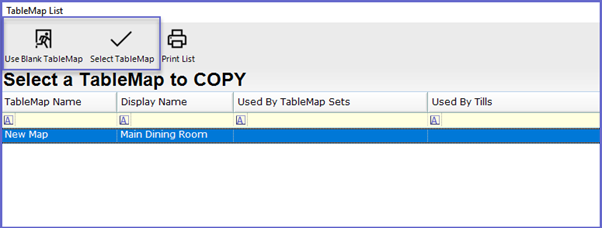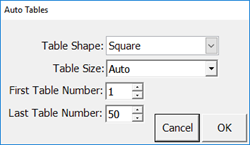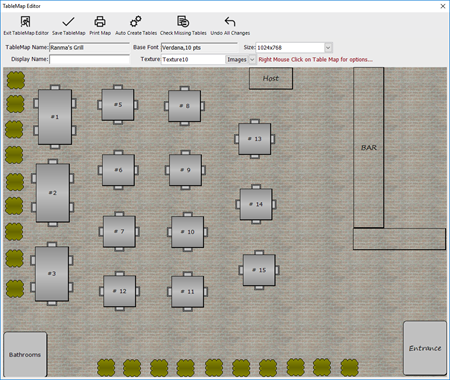- INTERNAL - Bepoz Help Guides
- End-User | Table Service and Kitchen Operations
- Graphical Table Maps
-
End-User | Products & SmartPOS
-
End-User | Stock Control
-
End-User | Table Service and Kitchen Operations
-
End-User | Pricing, Marketing, Promotions & Accounts
- Prize Promotions
- Points, Points Profiles and Loyalty
- Product Promotions
- Repricing & Discounts in SmartPOS
- Vouchers
- Account Till Functions
- Pricing, Price Numbers and Price Modes
- Raffles & Draws
- Marketing Reports
- Accounts and Account Profiles
- Rewards
- SmartPOS Account Functions
- Troubleshooting
- Product Labels
- Packing Slips
-
End-User | System Setup & Admin
-
End-User | Reporting, Data Analysis & Security
-
End-User | Membership & Scheduled Billing
-
End-User | Operators, Operator Permissions & Clocking
-
Interfaces | Data Send Interfaces
-
Interfaces | EFTPOS & Payments
- NZ EFTPOS Interfaces
- Linkly (Formerly PC-EFTPOS)
- Adyen
- Tyro
- ANZ BladePay
- Stripe
- Windcave (Formerly Payment Express)
- Albert EFTPOS
- Westpac Presto (Formerly Assembly Payments)
- Unicard
- Manager Cards External Payment
- Pocket Voucher
- OneTab
- Clipp
- eConnect-eConduit
- Verifone
- AXEPT
- DPS
- Liven
- Singapore eWallet
- Mercury Payments TRANSENTRY
- Ingenico
- Quest
- Oolio - wPay
-
Interfaces | SMS & Messaging
-
Interfaces | Product, Pricing, Marketing & Promotions
- Metcash Loyalty
- Range Servant
- ILG Pricebook & Promotions
- Oolio Order Manager Integration
- Ubiquiti
- Product Level Blocking
- BidFood Integration
- LMG
- Metcash/IBA E-Commerce Marketplace
- McWilliams
- Thirsty Camel Hump Club
- LMG Loyalty (Zen Global)
- Doshii Integration
- Impact Data
- Marsello
- IBA Data Import
- Materials Control
- Last Yard
- Bepoz Standard Transaction Import
-
Interfaces | Printing & KDS
-
Interfaces | Reservation & Bookings
-
Interfaces | Database, Reporting, ERP & BI
-
Interfaces | CALink, Accounts & Gaming
- EBET Interface
- Clubs Online Interface
- Konami Interface
- WIN Gaming Interface
- Aristocrat Interface
- Bally Interface
- WorldSmart's SmartRetail Loyalty
- Flexinet & Flexinet SP Interfaces
- Aura Interface
- MiClub Interface
- Max Gaming Interface
- Utopia Gaming Interface
- Compass Interface
- IGT & IGT Casino Interface
- MGT Gaming Interface
- System Express
- Aristocrat nConnect Interface
- GCS Interface
- Maxetag Interface
- Dacom 5000E Interface
- InnTouch Interface
- Generic & Misc. CALink
-
Interfaces | Miscellaneous Interfaces/Integrations
-
Interfaces | Property & Room Management
-
Interfaces | Online Ordering & Delivery
-
Interfaces | Purchasing, Accounting & Supplier Comms
-
SmartPOS | Mobile App
-
SmartPDE | SmartPDE 32
-
SmartPDE | Denso PDE
-
SmartPDE | SmartPDE Mobile App
-
MyPlace
-
MyPlace | myPLACE Lite
-
MyPlace | Backpanel User Guides
- Bepoz Price Promotions
- What's on, Events and tickets
- Staff
- System Settings | Operational Settings
- Vouchers & Gift Certificates
- Member Onboarding
- Members and memberships
- System Settings | System Setup
- Reports and Reporting
- Actions
- Offers | Promotions
- Messaging & Notifications
- System Settings | App Config
- Surveys
- Games
- User Feedback
- Stamp Cards
-
MyPlace | Integrations
-
MyPlace | FAQ's & How-2's
-
MyPlace | Release Notes
-
YourOrder
-
YourOrders | Backpanel User Guides
-
YourOrders | YourOrder Kiosk User Guide
-
YourOrders | Merchant App User Guide
-
WebAddons
-
Installation / System Setup Guides
- SmartPOS Mobile App | Setup
- SmartPOS Mobile App | SmartAPI Host Setup
- SmartPOS Mobile App | BackOffice Setup
- SmartPOS Mobile App | Pay@Table setup
- SmartKDS Setup 4.7.2.7 +
- SmartKDS Setup 4.6.x
- SQL Installations
- Server / BackOffice Installation
- New Database Creation
- Multivenue Setup & Config.
- SmartPOS
- SmartPDE
- Player Elite Interface | Rest API
- Interface Setups
- Import
- KDSLink
- Snapshots
- Custom Interface Setups
-
HOW-2
- Product Maintenance
- Sales and Transaction Reporting
- SmartPOS General
- Printing and Printing Profiles
- SQL
- Repricing & Discounts
- Stock Control
- Membership
- Accounts and Account Profiles
- Miscellaneous
- Scheduled Jobs Setups
- Backoffice General
- Purchasing and Receiving
- Database.exe
- EFTPOS
- System Setup
- Custom Support Tools
-
Troubleshooting
-
Hardware
1 | Creating & Editing Table Maps
This article covers a brief overview of how to manage Table Maps within BackOffice. Table Maps are typically used in full-service restaurant settings and allow for the layout of the restaurant's tables to be displayed on SmartPOS Workstations. There are numerous different functions available to be configured within the table map settings in depending on each Venue's requirements: Displaying the time since seated, Time since last order, Table number, Name, Balance.
This article covers a brief overview of how to manage Table Maps within BackOffice.
Table Maps are typically used in full-service restaurant settings and allow for the layout of the restaurant's tables to be displayed on SmartPOS Workstations.
There are numerous different functions available to be configured within the table map settings in depending on each Venue's requirements: Displaying the time since seated, Time since last order, Table number, Name, Balance.
There are also functions to display warning minutes and have the tables change color depending on the current course ordered/served.
Prerequisites
N/A
Getting Started
- Run BackOffice and login
- Go to Maintenance > TableMaps & Sets
- The TableMap List Tab will open:

Table Map Maintenance
Adding a New Table Map
- To add a New Table Map, select the "Add New TableMap" button at the top of the Tab
- The below screen will appear; Operators can either create a New Table Map by choosing the "Use Blank Table Map" button or can choose from the list of current Maps and use one of these as a Template

- The first screen that is shown will prompt Operators to give the Table Map a name
- This is the Master name, however, the Table Map may have a different display name i.e.
- TableMap Name: Bepoz Sydney Functions Menu
- Display Name: Functions

- The Maximum Table Map name size is limited to 16 characters
- Operators can now begin to Edit the new Table Map
- Operators can also add a Display Name (this is the name that will be displayed in SmartPOS)
- If required, Operators can Add either a default texture from the drop-down menu provided or alternatively can upload a background image by selecting the Images button
Creating Tables
- A large number of Tables can be created via the "Auto Create Tables" function button; this will display a window similar to below and allows for creating all Tables at once

- Alternatively, Tables can also be added individually - giving greater flexibility
- To Add a Table, Tables, Plant or Object to the map Right Click on the Map Area
- A Window will appear

- When either of the "Add" options is selected, the following screen will appear with the relevant Object Type Selected

- The TableMap Editor allows for altering the Text, Font, Color, and Number of chairs; by checking "Auto Chairs" Flag, the Number of Chairs will automatically be generated depending on the table size
- Once done, Press 'OK' and the object will be added to the Table Map
- To move the shape Left Click and Holding on it and dragging it to the desired location
- Operators can change the size of the shape by clicking on an edge of it and expanding or decreasing its size
- Repeat Adding, Moving and Altering objects until the map is completed

- To make editing easier, Operators can also Copy and Paste existing objects and Alter them from there
Editing Table Maps
- To Edit a Table Map, Click the "Edit Table Map" Icon or double-click the Map that needs to be modified
- The selected Table Map will Open up the TableMap Editor page where Operators can Edit the existing layout
- Once the Map has been Edited, the system asks permission to Refresh all the Till Override Maps at All Connected Tills
- Press 'Yes' to Save the Changes and the Map will then be modified at all connected Tills
